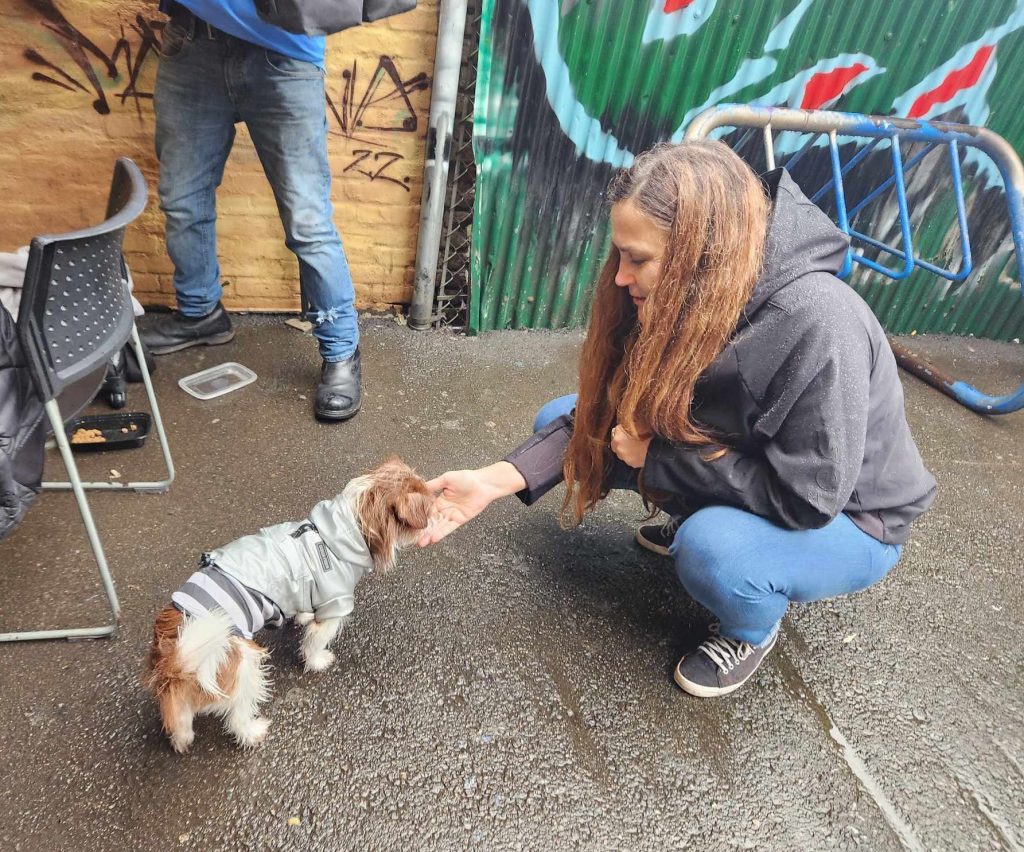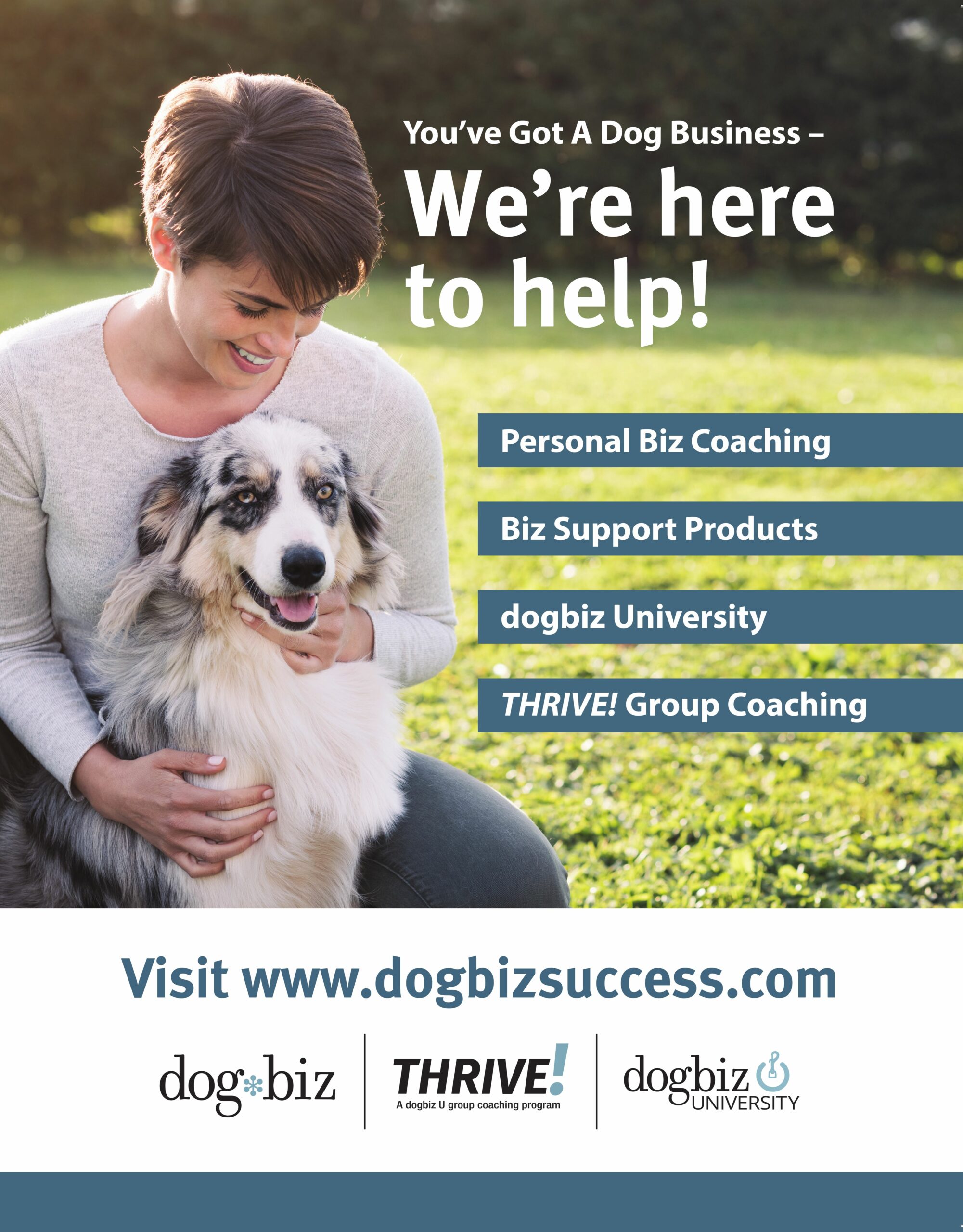Barks Blog
Meet Kim Monteith of the British Columbia SPCA

Kim prioritizes the well-being of both animals and people in her work.
Tell us a little bit about yourself. How did you first get into animal behavior/training or pet care, and what you are doing now?
With over 25 years in animal behavior and pet care, my journey began with a pet-sitting business and then volunteering at the British Columbia SPCA in various roles, including trainer and dog walker, which ultimately led to a paid position as an animal care attendant. During this time, I also had the opportunity to work in such roles as emergency rescue, animal control, and cruelty investigations, which led me to my role as regional manager of animal welfare where I supported multiple shelters. Even with a busy work schedule, I continued to volunteer managing a pet food bank for 22 years and a free vet clinic for over 15 years. Now, as manager of animal behavior and welfare, I develop and implement programs and training for staff and volunteers across BC SPCA’s 34 shelters. From developing behavior protocols and intake systems for hoarding cases to setting up emergency shelters, my passion remains to ensure the well-being of every animal in our care. On my days off, I support unhoused people with addictions or other barriers with training for their pets.
Tell us a little bit about your own pets.
Currently, I live with a three-year-old, four-pound Prague Ratter named Itzee. Itzee came into one of our shelters as a tiny pup needing medical care and a foster. We’ve been together ever since. Itzee is a little bundle of fun and always up to learning. She’s great with all the fosters that come through our home, though she prefers kittens because of their play style.
What do you consider your area of expertise?
Animal management and behavior in shelters, and pets living on the street with unhoused people and people with addictions.
Why did you become an animal behavior/training professional?
I got into animal behavior and training because I wanted to understand how to help dogs better. I started a pet-sitting business and it wasn’t enough. I wanted to do more, and then I quickly realized it’s not just about dogs—it’s also about helping people. I genuinely enjoy assisting and connecting with people, which motivates me to continue in this field. We can’t help the animals without the people.
What species do you work with?
I work with dogs, cats, and rabbits primarily, though I support our shelters with behavior and welfare for a variety of other species like birds, rats, etc.
Are you a crossover trainer or have you always been a force-free trainer?
I guess you could say I’m a crossover trainer. Over 24 years ago, I did listen to people teaching methods I didn’t fully understand. These methods are what led me to want to learn more about training and not causing animals pain or scaring them.
What drives you to be a force-free professional, and why is it important to you?
I want to be kind, compassionate, and use humane methods. With force-free techniques grounded in science, I can make sure my training is effective while also prioritizing the well-being and welfare of the animals and people I work with.
What awards or competition placements have you and your pet achieved using force-free methods?
My little Itzee has her Advanced Trick title from Do More With Your Dog. However, I think my biggest award (for me) is implementing Fear Free(R) and Low-Stress Handling(R) techniques at the BC SPCA along with standards in animal handling and training. This means all staff and volunteers must use force-free methods with all handling, interactions, and training.
Who has most influenced your career and how?
Two people have had a huge influence on my career. The first person is Dr. Nadine Gourkow, who taught me about animal welfare, believed in me, and supported me. Nadine helped me understand the suffering animals may experience in a shelter, how to recognize it, and how to help them. Nadine is also the person who encouraged me to learn more and introduced me to the work of Jean Donaldson, who is the second person who has had a big influence on my career. Going through the Academy for Dog Trainers program was one of the best things I’ve ever done to advance my career. Jean’s work in animal shelters and her high standards in training and dog welfare not only gave me skills and knowledge, it inspired me. Because of Jean, I’ve been able to influence and implement behavior programs that have improved welfare, saved lives, and kept animals out of shelters.
How has the Pet Professional Guild helped you to become a more complete trainer?
PPG gives me a place where I can connect, network, and collaborate with people who align with my beliefs.
What are some of your favorite force-free techniques for commonly encountered client-pet problems?
Some of my favorite force-free techniques are positive reinforcement, desensitizing and counter-conditioning, clicker training, management strategies, environmental enrichment, and cooperative care training. I use these because they prioritize the well-being of the animal and foster a positive relationship between the animal and the person.
What is the reward you get out of a day’s work with people and their pets?
My reward is seeing a happy pet and person. It’s when you see the bond between a person and their pet. In shelters, it’s when I see an animal start to trust people or when their day is better than it was the day before. It’s also when I see staff and volunteers get it—when they see how they can make a difference in an animal’s life using force-free techniques.
What is your favorite part of your job?
My favorite part of my job is helping people learn about behavior and how they can make a difference. This could be a person living on the street or a staff person. Watching someone learn and then apply what they learned and see the change is amazing. For example, I watched a staff member do behavior modification sessions with a cat from a hoarding case, and the moment the cat started to eat off the person’s hand and I saw the person get it, that they did this and in a humane way, it was amazing to see.
What is the funniest or craziest situation you have been in with a pet and their owner?
The craziest situation was after helping someone on the street, when they introduced me to other people, they always introduced me as their dog’s social worker.
What special work-related projects or activities are you currently involved in?
Currently, I’m developing an enrichment manual and courses on defensive handling and how to break up dog fights. Along with these projects, I’m consulting on the design of the shelter’s new behavior center. When I’m not working, I’m training pets at an overdose prevention site to help people who may not have access to training or pet care support.
How have these special projects or activities helped your business, career, or service offerings?
All of these projects/activities help me bring new programs and training to staff and volunteers at the shelter, which helps improve their skills and knowledge. They also increase both animal and human safety and welfare.
What’s next for you?
I’m so fortunate to do what I love, my job doesn’t feel like a job, and the BC SPCA is an amazing organization to work for, so I’m not sure what is next for me. I want to continue to learn and develop, so I’m going to start by going through all of PPG’s webinars. My goal is to always learn, especially about how we can keep pets in homes.
What advice would you give to a new animal behavior/training or pet care professional starting out?
Based on my experiences, I would advise them to prioritize continuous learning. Seek out reputable sources of information, attend workshops, and engage with professional organizations like the PPG to expand your knowledge and skills. Additionally, never underestimate the power of empathy and patience when working with animals and their owners. Building trust and rapport takes time, so be patient with yourself and your clients. Finally, always prioritize the well-being and welfare of the animals in your care, and never hesitate to seek guidance or support from more experienced professionals when needed.

